7 books about Help
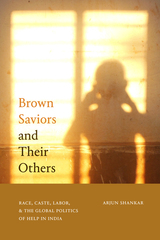
Brown Saviors and Their Others
Race, Caste, Labor, and the Global Politics of Help in India
Arjun Shankar
Duke University Press, 2023
In Brown Saviors and Their Others Arjun Shankar draws from his ethnographic work with an educational NGO to investigate the practices of “brown saviors”—globally mobile, dominant-caste, liberal Indian and Indian diasporic technocrats who drive India’s help economy. Shankar argues that these brown saviors actually reproduce many of the racialized values and ideologies associated with who and how to help that have been passed down from the colonial period, while masking other operations of power behind the racial politics of global brownness. In India, these operations of power center largely on the transnational labor politics of caste. Ever attentive to moments of discomfort and complicity, Shankar develops a method of “nervous ethnography” to uncover the global racial hierarchies, graded caste stratifications, urban/rural distinctions, and digital panaceas that shape the politics of help in India. Through nervous critique, Shankar introduces a framework for the study of the global help economies that reckons with the ongoing legacies of racial and caste capitalism.
[more]
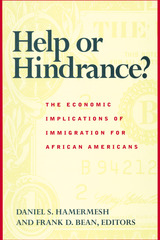
Help or Hindrance?
The Economic Implications of Immigration for African Americans
Daniel S. Hammermesh
Russell Sage Foundation, 1998
With recent immigration at a near record high, many observers fear that African Americans, particularly those in low skill jobs, are increasingly losing out to immigrants in the American labor market. Because today's immigrants are largely non-European and non-white, there is also speculation that their presence will intensify the competition for housing and educational opportunities among minority groups. Help or Hindrance? probes the foundation of these concerns with the first comprehensive investigation into the effects of immigration on African Americans. With detailed economic analysis of African American job prospects, benefits, and working conditions, Help or Hindrance? demonstrates that although immigration does not appear to have affected the actual employment rate of blacks, it has contributed slightly to the widening gap between the annual earnings of black and white males. Those near the lowest skills level appear most affected, suggesting that the most likely losers are workers with abilities similar to those of immigrants. With many employers moving away from cities, access to housing and problems of segregation have also become integral to success in the job market. And within black neighborhoods themselves, the establishment of small immigrant businesses has raised concerns that these may hinder local residents from starting up similar ventures. Help or Hindrance? also examines how immigration has affected the educational attainment of African Americans. Increased competition for college affirmative action and remedial programs has noticeably reduced African Americans' access to college places and scholarships. Help or Hindrance? offers compelling evidence that although immigration has in many ways benefited parts of American society, it has had a cumulatively negative effect on the economic prospects of African Americans. In concluding chapters, this volume provides an overview of possible policy interventions and evaluates them within the current social and political climate. Because the long-term impact of current immigration on social welfare remains unknown solutions are far from clear. Help or Hindrance? provides a valuable benchmark for discussion of immigration and racial equity in a time of rapid population change.
[more]
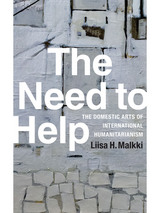
The Need to Help
The Domestic Arts of International Humanitarianism
Liisa H. Malkki
Duke University Press, 2015
In The Need to Help Liisa H. Malkki shifts the focus of the study of humanitarian intervention from aid recipients to aid workers themselves. The anthropological commitment to understand the motivations and desires of these professionals and how they imagine themselves in the world "out there," led Malkki to spend more than a decade interviewing members of the international Finnish Red Cross, as well as observing Finns who volunteered from their homes through gifts of handwork. The need to help, she shows, can come from a profound neediness—the need for aid workers and volunteers to be part of the lively world and something greater than themselves, and, in the case of the elderly who knit "trauma teddies" and "aid bunnies" for "needy children," the need to fight loneliness and loss of personhood. In seriously examining aspects of humanitarian aid often dismissed as sentimental, or trivial, Malkki complicates notions of what constitutes real political work. She traces how the international is always entangled in the domestic, whether in the shape of the need to leave home or handmade gifts that are an aid to sociality and to the imagination of the world.
[more]
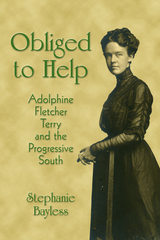
Obliged to Help
Adolphine Fletcher Terry and the Progressive South
Stephanie Bayless
Butler Center for Arkansas Studies, 2011
Author Stephanie Bayless examines why this Southern aristocratic matron, the daughter of a Confederate soldier, tirelessly devoted herself to improving the lives of others and, in so doing, became a model for activism across the South. It is the first work of its kind to consider Terry's lifelong commitment to social causes and is written for both traditional scholars and all those interested in history, civil rights, and the ability of women to create change within the gender limits of the time. Adolphine Fletcher Terry died in Little Rock, Arkansas, in July of 1976, at the age of ninety-three. Her life was a monument to progress in the South, particularly in her native state of Arkansas, a place she once described as "holy ground."
[more]
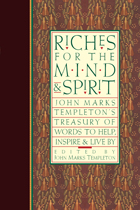
Riches for the Mind and Spirit
John Marks Templeton's Treasury of Words to Help, Inspire, and Live By
John Marks Templeton
Templeton Press, 2006
This book contains a collection of John Templeton's favorite inspirational passages.
“From the Bible, from philosophers and poets, and from other writers, we begin to form a clear understanding of the spiritual and ethical laws of life. The world's literature teaches us valuable lessons that no amount of money can buy. Those lessonsare there for everyone. They are free and they are priceless.”—John Marks Templeton
[more]
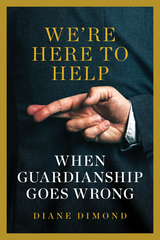
We're Here to Help
When Guardianship Goes Wrong
Diane Dimond
Brandeis University Press, 2023
The human stories behind the headlines exposing the truth about the guardianship system.
The state-run guardianship system, called conservatorship in some states, is largely unregulated, ill-understood, and increasingly populated by financially motivated predators. Just how the secretive world of guardianship works and its real-life effects remained a mystery to most until the very public case of pop star Britney Spears. It suddenly became clear that those conscripted into the system lose all their civil rights in the process. Currently, there are an estimated 1.5 to 2 million Americans under court control, but precise figures are not known as no government entity keeps track of citizens who have lost the right to determine their own fate.
Established in the late 1800s, the guardianship system was designed to assist the most vulnerable citizens: the elderly and the physically or intellectually disabled. While guardianship has been beneficial to many “wards of the court,” this little-understood process can be a judicial rollercoaster from which there is seldom an escape, and which often leads to financial devastation for the ward and their families. Each year, fifty billion dollars belonging to wards are placed under the control of court appointees, an obvious temptation to bad actors who are in a position to control these funds. As investigative journalist Diane Dimond discovers, the number of exploitive and abusive guardianship cases nationwide demands our urgent attention. This book also provides concrete steps that families can take to protect themselves, as guardianship can happen to any one of us at any time.
The state-run guardianship system, called conservatorship in some states, is largely unregulated, ill-understood, and increasingly populated by financially motivated predators. Just how the secretive world of guardianship works and its real-life effects remained a mystery to most until the very public case of pop star Britney Spears. It suddenly became clear that those conscripted into the system lose all their civil rights in the process. Currently, there are an estimated 1.5 to 2 million Americans under court control, but precise figures are not known as no government entity keeps track of citizens who have lost the right to determine their own fate.
Established in the late 1800s, the guardianship system was designed to assist the most vulnerable citizens: the elderly and the physically or intellectually disabled. While guardianship has been beneficial to many “wards of the court,” this little-understood process can be a judicial rollercoaster from which there is seldom an escape, and which often leads to financial devastation for the ward and their families. Each year, fifty billion dollars belonging to wards are placed under the control of court appointees, an obvious temptation to bad actors who are in a position to control these funds. As investigative journalist Diane Dimond discovers, the number of exploitive and abusive guardianship cases nationwide demands our urgent attention. This book also provides concrete steps that families can take to protect themselves, as guardianship can happen to any one of us at any time.
[more]

"With the Help of God and a Few Marines"
The Battles of Chateau Thierry and Belleau Wood
Albertus W. Catlin
Westholme Publishing, 2013
An Account of the United States Marines’ Service in Two of the Most Important Battles Fought by American Forces in World War I
“The story of the marines in France is told with authority and interest.”—Booklist
“It is one of the books about the American war effort which is well worth keeping as well as reading.”—Outlook
“A well-written and complete account.”—Library Bulletin
In an area of woods smaller than New York City’s Central Park, the United States Marines made a desperate and dramatic stand against the might of the Imperial Germany Army’s final offensive in June 1918. Had the Germans broken through the lines as planned, there would have been no Allied forces between them and Paris. World War I had stagnated for nearly four years, and this last German push was a desperate, but powerful gamble to finally bring the war to a close. As at Guadalcanal during World War II, the enemy had not anticipated the ferocity and doggedness of the United States Marines. Leading this small expeditionary force was Brigadier General Albertus Wright Catlin. For most of the month of June the marines fought the Germans at close range, using their rifles effectively and engaging in hand-to-hand combat. Toward the end of the battle, Catlin was shot in the chest by a sniper and removed from the field. While recuperating, he began “With the Help of God and a Few Marines”, his account of the marines’ experience in France, including what became known as the Battle of Belleau Wood. First published in 1919, and considered among the finest American memoirs from World War I, it is notable for its description of what it means to be a United States Marine—an account as relevant today as it was nearly a century ago—and its straightforward depiction of life and death on the Western Front in the last months of the war.
“The story of the marines in France is told with authority and interest.”—Booklist
“It is one of the books about the American war effort which is well worth keeping as well as reading.”—Outlook
“A well-written and complete account.”—Library Bulletin
In an area of woods smaller than New York City’s Central Park, the United States Marines made a desperate and dramatic stand against the might of the Imperial Germany Army’s final offensive in June 1918. Had the Germans broken through the lines as planned, there would have been no Allied forces between them and Paris. World War I had stagnated for nearly four years, and this last German push was a desperate, but powerful gamble to finally bring the war to a close. As at Guadalcanal during World War II, the enemy had not anticipated the ferocity and doggedness of the United States Marines. Leading this small expeditionary force was Brigadier General Albertus Wright Catlin. For most of the month of June the marines fought the Germans at close range, using their rifles effectively and engaging in hand-to-hand combat. Toward the end of the battle, Catlin was shot in the chest by a sniper and removed from the field. While recuperating, he began “With the Help of God and a Few Marines”, his account of the marines’ experience in France, including what became known as the Battle of Belleau Wood. First published in 1919, and considered among the finest American memoirs from World War I, it is notable for its description of what it means to be a United States Marine—an account as relevant today as it was nearly a century ago—and its straightforward depiction of life and death on the Western Front in the last months of the war.
[more]
READERS
Browse our collection.
PUBLISHERS
See BiblioVault's publisher services.
STUDENT SERVICES
Files for college accessibility offices.
UChicago Accessibility Resources
home | accessibility | search | about | contact us
BiblioVault ® 2001 - 2025
The University of Chicago Press









